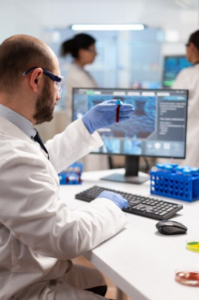The rules for clinical studies are always changing, so ensuring they follow the rules and keeping the data safe is very important. Virtual Data Rooms (VDRs) have become an important way to speed up processes, improve teamwork, and keep private information safe as technology continues to change how we do medical research. This piece will detail how important VDRs are for clinical trials and how they help with compliance and data security while changing how research is done.
Getting to the bottom of the role of VDRs in clinical trials: closing the collaboration gap
Many groups, from experts and donors to government bodies, are involved in clinical trials. VDRs connect people and make it easy for them to work together in a safe online space. Researchers and users can work together effectively, even in different places, by sharing protected data and having real-time access to documents.
Increasing safety measures
It is imperative to protect the privacy and accuracy of clinical study data. Secure the virtual space where private information lives with advanced security measures like multi-factor authentication and encryption. This lowers the risk of illegal access and gives stakeholders faith in the security means to keep their data safe.

Managing regulatory documents more efficiently with VDRs: how to stay in compliance with regulations
A big part of running a good clinical study is following all the rules and regulations. VDRs make this process easier by letting you store and manage legal papers in one place. This makes checks and reports go more quickly and ensures that all the necessary paperwork is easy to find and follows the rules set by the government.
Monitoring and reporting in real-time
Compliance is an ongoing process, and VDRs are crucial for real-time tracking and reporting. These systems give researchers and sponsors quick access to trial data, which lets them deal with compliance problems immediately. Being proactive reduces the risk of regulatory setbacks and encourages openness in the clinical study environment.
Achieving Accurate Data Entry and Verification in the Age of VDRs: Data Integrity
Data security is very important in clinical study, and VDRs help ensure that data is correct. These platforms make it less likely for mistakes to happen by using features like validated data entry and automatic checking processes. This makes the data collected during the trial more reliable.
Tracking of changes and audits
For transparency and tracking, it’s important to keep a clear record of all changes made to data. Version control and audit trails work well with VDRs so that researchers can keep track of changes, document updates, and user interactions. This careful recording not only protects against mistakes that were made by accident but also gives auditors a full record.
How to Get Around Problems with VDR Implementation, User Training, and Adoption
Putting VDRs into use comes with its own set of problems. Training and getting people to use them are two of the most important. Giving full training to everyone involved in the clinical study process is important to get the most out of these tools. These steps ensure everyone knows how to use the VDR’s features correctly.
Taking Care of Privacy Concerns About Data
VDRs must deal with data privacy issues head-on since they are in charge of private medical data. It is very important to pick a VDR provider that follows the rules for data protection and has clear privacy policies. Sharing these steps with those who have a stake in the clinical study process builds trust and faith in its honesty.
In conclusion, the future of clinical trials will be very different.
With the addition of Virtual Data Rooms to clinical studies, how we do and handle medical research has completely changed. VDRs are now essential tools for researchers and consumers alike. They make it easier for people to work together, follow the rules, and ensure that data is always correct. Since we live in a digital world, using VDRs is a choice and a must for anyone who wants to advance medical science with accuracy, safety, and compliance.
Important Questions About VDR for Clinical Trials: Making Sure of Compliance and Data Security
Ensuring compliance and protecting data accuracy are very important in the fast-paced world of clinical studies. Introducing Virtual Data Rooms (VDRs) has changed everything by giving academics and users a safe place to work together. This piece answers some of people’s most common questions about VDRs in clinical studies. It shows how important they are for maintaining standards, streamlining processes, and ensuring that medical research is reliable.
FAQs on VDR for Clinical Trials: Ensuring Compliance and Data Integrity
For dependable results in a clinical study, ensuring the data is correct is very important. Virtual Data Rooms (VDRs) are important because they use strict security measures like encryption and access rules to keep information safe. VDRs reduce mistakes by having features like validating data entry and version control, ensuring that sample data is correct and reliable.

What is the best way to check for participation in a research trial?
There are several ways to measure participation in a clinical study. VDRs simplify this process by giving you a single place to store and manage regulatory papers. Researchers can quickly deal with compliance problems thanks to features that let them watch and report in real-time. This proactive method lowers the risk of regulatory setbacks and makes the study more open.
Does the study procedure help ensure that the participants are safe and that the data is correct?
Of course. The study procedure is key to ensuring that participants are safe and that the data is correct. By offering a safe space for working together and watching in real-time, VDRs make it easier to follow the rules. Researchers can ensure that everyone involved in the clinical trial follows the rules. This makes the prosecution safer and more reliable overall.
What does SDV mean in lab tests?
Source Data Verification, or SDV, is an important part of clinical studies that ensures the data received is correct and reliable. VDRs make SDV easier by putting all source papers in one place. This makes the checking process more efficient and helps keep the data in the clinical study honest.

